A ways back I decided that when the mobile viewership of Coffee Spoons reached a certain threshold I would implement a new, more mobile-friendly theme—something simpler and faster. Well last week you all crossed that threshold and so today we have a new and responsive theme. I am sure that there will be kinks, but I will deal with them when they arise. For now, enjoy the new design.
But Can You Do the Gerrymander?
It’s Friday. And that means you will likely be contorting on the dance floor this weekend. But if you tried to bend to conform to any of these congressional districts, you would likely break your back. Gerrymandering is an old practice that basically allows state governments to decide what area (and therefore populations) belong to which congressional district. If you carve up your opposition well enough, you can consolidate them into far fewer districts than they might otherwise win. Pennsylvania is just one such example of an unbalanced state. This interactive infographic game from Slate forces you to solve the jigsaw puzzle of congressional districts.

Credit for the piece goes to Chris Kirk.
Women Bankers
…and not just any bankers but central bankers (the ones who establish policies at a national level), are rather under represented as this graphic from the Economist details. It is a nice use of small multiples with bar charts over time. Each bar is a 0–50% of the total membership of a central bank board and the share that is dark represents the number of women. Clearly for the countries selected not a single one has had a board of more than 50% women. Sweden and South Africa are the only two countries shown that have had 50% participation from women central bankers—though Norway and Denmark (for a period of time) have been consistently close.
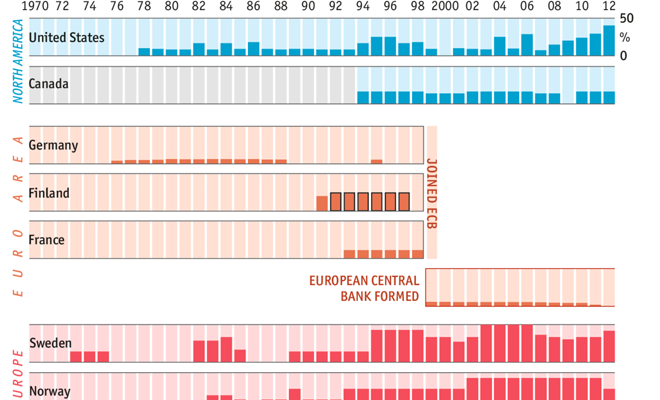
Credit for the piece goes to C.W., P.A.W., L.P., and P.K.
Riding the Rails
A little while ago the Washington Post published this graphic on Metro ridership. But not just anybody’s ridership, that of the individuals who sit on the DC transit agency’s board. After all, should not those overseeing Washington’s transit agency be intimately familiar with the conditions faced by DC commuters?

The graphic is a really nice use of small multiples and shading and tinting to indicate which lines are travelled by specific persons. An icon of a bus denotes bus ridership. This is a very good piece.
Credit for the piece goes to Wilson Andrews, Dana Hedgpeth, Mark Berman, and Luz Lazo.
Whip Counts to Authorise Force in Syria
I was catching up on some news tonight and I came upon an unhelpful graphic that was supposed to be helping me understand the whip count (who is voting yes or no) for authorising the use of force in Syria. Below is the original graphic from Think Progress.

I struggled, however, to directly compare the yes and no votes. While I certainly understand that the splits within both parties are a fascinating subplot to the greater issue of will we bomb Syria, the traditional congressional arc visualisation is not helpful here. So using the same numbers, I simply plotted what is essentially a stacked bar chart. In truly heretical, i.e. independent, fashion I mixed the two parties together and placed them at either ends of the chart. The first to reach 50% wins. (If I were updating this live of course.)

Credit for the original goes to Igor Volsky and Judd Legum.
Watching Weekday Football (of the American Variety)
Admittedly I am a one-sport kind of guy; baseball is my thing. But I am at least aware that as Labour Day demarcates the border between summer and fall, it simultaneously signifies the beginning of the seasonal transition from baseball to football. (Though I am still pulling to see the Red Sox in October.)
This graphic comes from the New York Times from an article looking at the sports network ESPN. Specifically, the article focuses on the network’s strategy of working with smaller schools desiring national attention to fill in open spaces on their weekly broadcast calendar. In short, weekday nights are not big nights for college football; usually people watch their alma maters on Saturday. But, if your school is willing to make schedule adjustments, ESPN is apparently willing to throw you some money. This interactive bar chart looks at whether your alma mater (or in my case the only university I attended that had sports—yay art school) has begun to play weekday games.
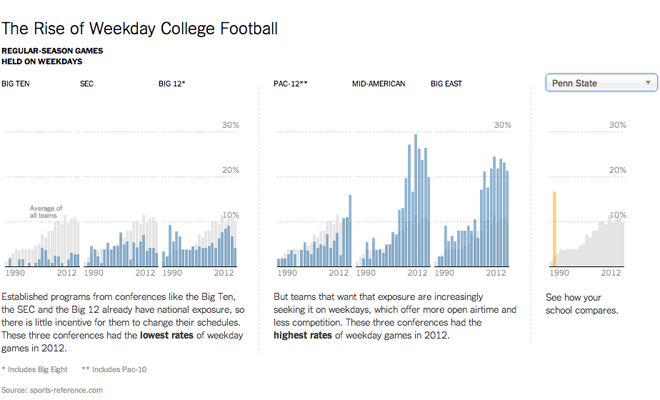
Credit for the piece goes to the New York Times graphics department.
The Best and Worst States for [Insert Topic]
It’s Friday, and mercifully this is a Friday before a three-day weekend. (For all of those who, like me, have a day off coming up on Monday.) So before everyone starts travelling to places here and there and everywhere in between, you best check this series of maps. Why? Because Business Insider has polled us, well 1600 of us, to find the best and worst states for a number of metrics. My personal favourite:
“Most likely due to the fact that most Americans have never been to Philadelphia, the rest of the country believes New York also has the worst sports fans. I blame John Rocker.”
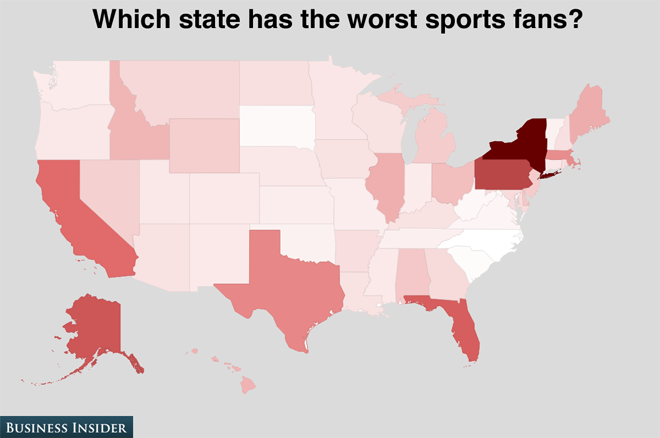
Credit for the piece goes to Walter Hickey.
When it Rains…
Today’s interactive piece comes from Axis Philly and it looks at the total amount of rainfall in Philadelphia (1990–2013) to find both which months and what time of day receive the most rainfall.

As it turns out, evenings in the summer months receive the most rainfall. And since 1990, the most rain has fallen between 19.00 and 20.00 in July. A nice complementary piece would have been a small graphic showing total distribution of rain over the months, without segregating the data into hourly chunks. But again, that would have been a nice complement to the piece as it is far from necessary.
Credit for the piece goes to Jeff Frankl, Casey Thomas, and Julia Bergman.
Syria Crisis
I did not have quite enough time to develop this piece to what I wanted, but for now it will have to suffice. I wanted to look at the situation in Syria, but I only had time to outline who has what near Syria. Click the image for the larger version.
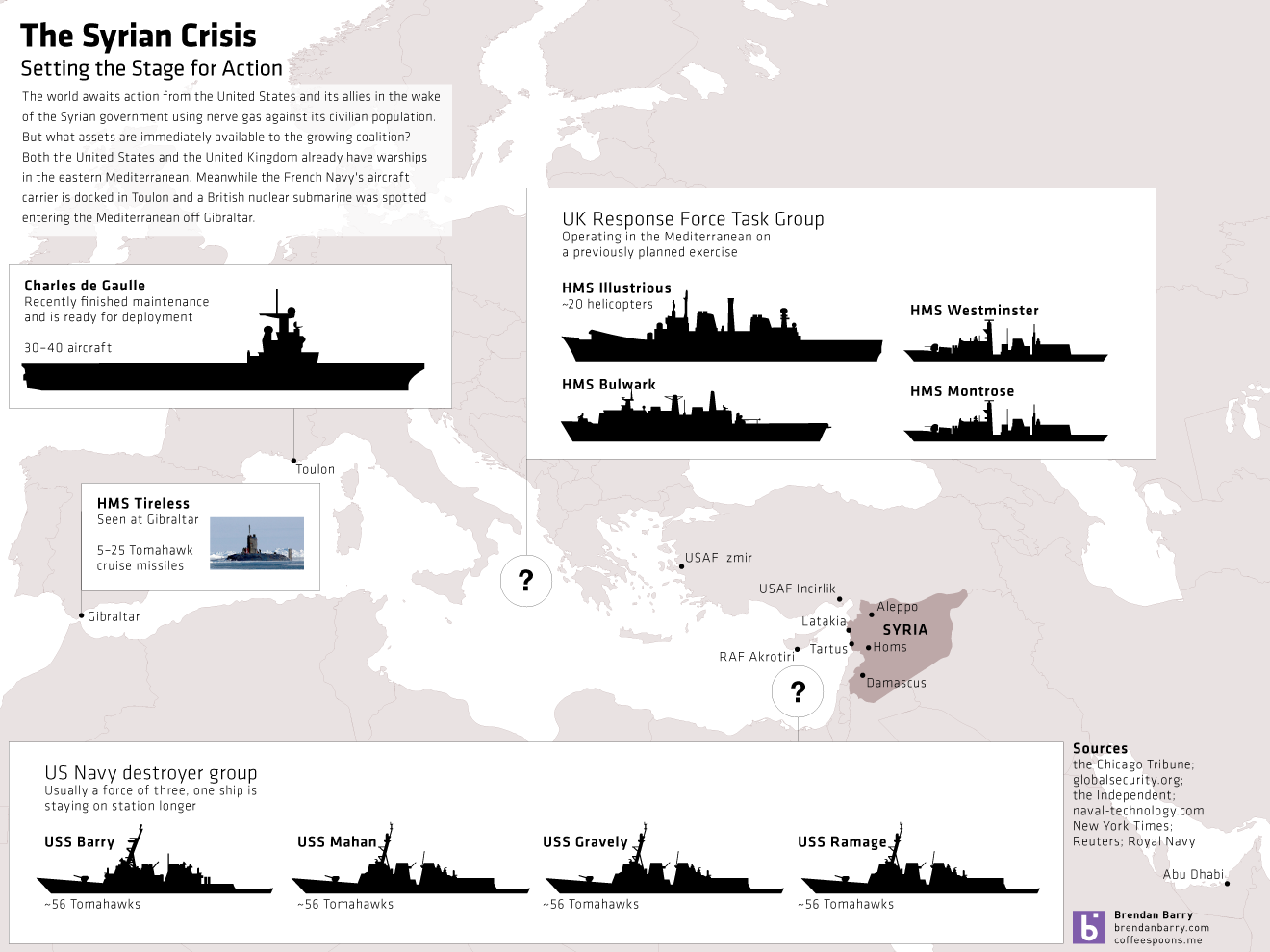
All in the Family (and the Friends and the Neighbours)
Recently my hobby of my family’s history has focused on my Rusyn (or Ruthenian) roots. However, this recent work out of Stanford University piques my interest in my English heritage, even though much of it is very far back in time. Using my 23 × great-grandfather Reynold de Mohun you can begin to see how it links persons within families, how those lives intersected over time, and the geographical areas where that person lived. In Reynold’s case, it was the 12th–13th centuries in Somerset, England.

But as the title kindred implies, this piece is not just about direct family connections, but also the marriages and close cultural links between certainly the elite of British society. Below is how Reynold is connected to King William I, better known as William the Conqueror.
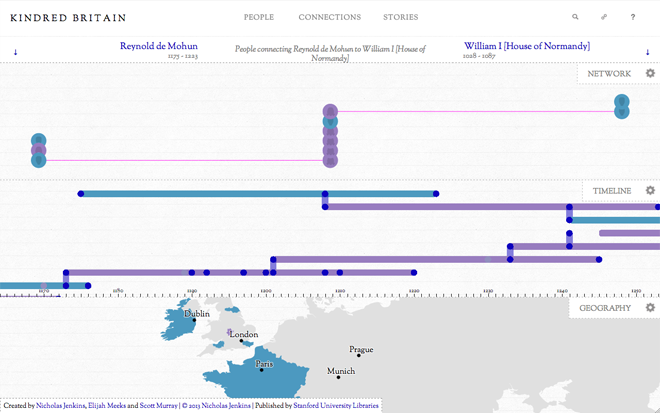
Family history or genealogy is a topic ripe for data visualisation and information design because it is all about connections. But I have found beyond the common family tree diagram little interesting has been created. This work is a solid start in the right direction.
Credit for the piece goes to Nicholas Jenkins, Elijah Meeks, and Scott Murray.
